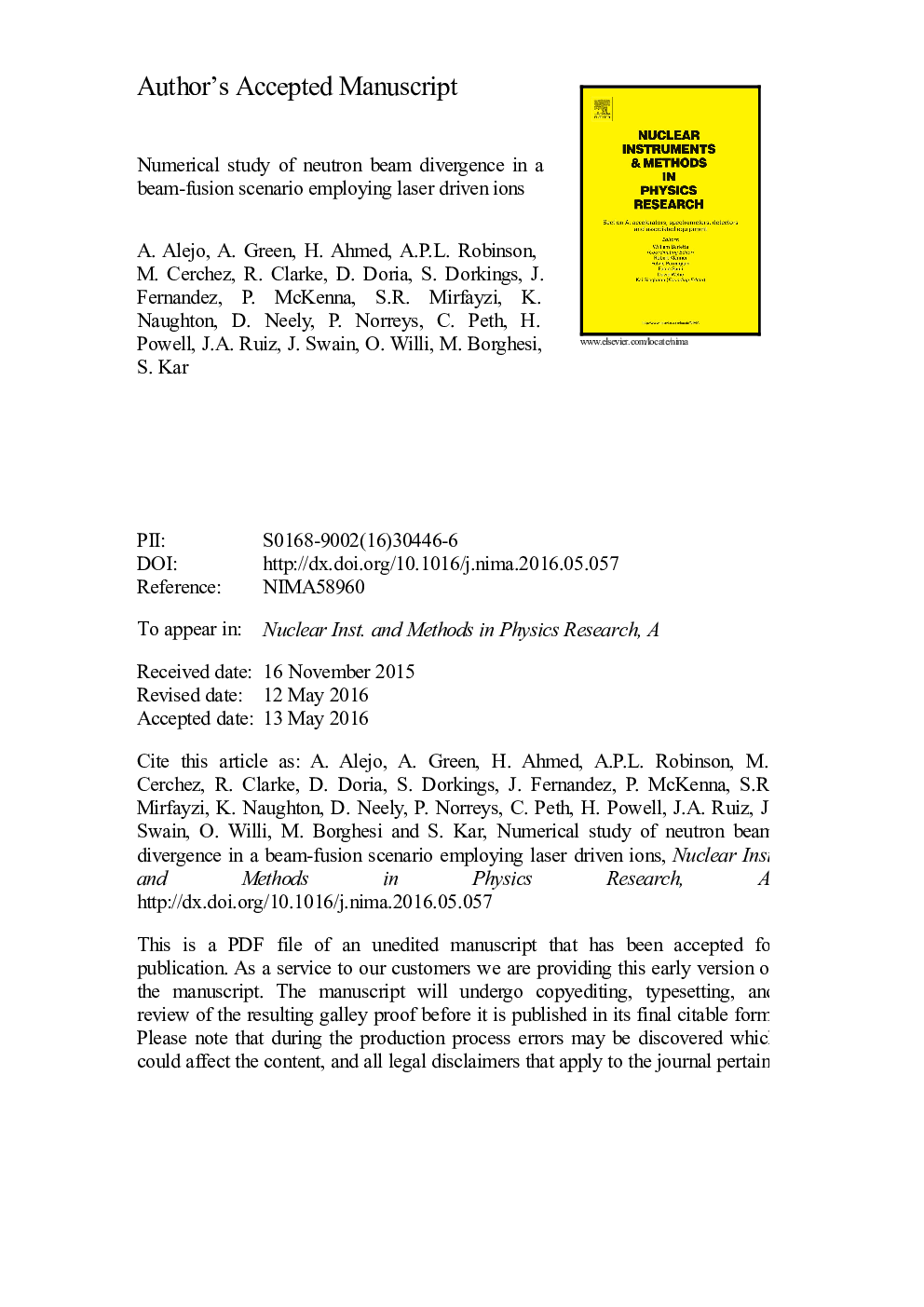| Article ID | Journal | Published Year | Pages | File Type |
|---|---|---|---|---|
| 8169204 | Nuclear Instruments and Methods in Physics Research Section A: Accelerators, Spectrometers, Detectors and Associated Equipment | 2016 | 7 Pages |
Abstract
The most established route to create a laser-based neutron source is by employing laser accelerated, low atomic-number ions in fusion reactions. In addition to the high reaction cross-sections at moderate energies of the projectile ions, the anisotropy in neutron emission is another important feature of beam-fusion reactions. Using a simple numerical model based on neutron generation in a pitcher-catcher scenario, anisotropy in neutron emission was studied for the deuterium-deuterium fusion reaction. Simulation results are consistent with the narrow-divergence (â¼70° full width at half maximum) neutron beam recently served in an experiment employing multi-MeV deuteron beams of narrow divergence (up to 30° FWHM, depending on the ion energy) accelerated by a sub-petawatt laser pulse from thin deuterated plastic foils via the Target Normal Sheath Acceleration mechanism. By varying the input ion beam parameters, simulations show that a further improvement in the neutron beam directionality (i.e. reduction in the beam divergence) can be obtained by increasing the projectile ion beam temperature and cut-off energy, as expected from interactions employing higher power lasers at upcoming facilities.
Related Topics
Physical Sciences and Engineering
Physics and Astronomy
Instrumentation
Authors
A. Alejo, A. Green, H. Ahmed, A.P.L. Robinson, M. Cerchez, R. Clarke, D. Doria, S. Dorkings, J. Fernandez, P. McKenna, S.R. Mirfayzi, K. Naughton, D. Neely, P. Norreys, C. Peth, H. Powell, J.A. Ruiz, J. Swain, S. Kar,
